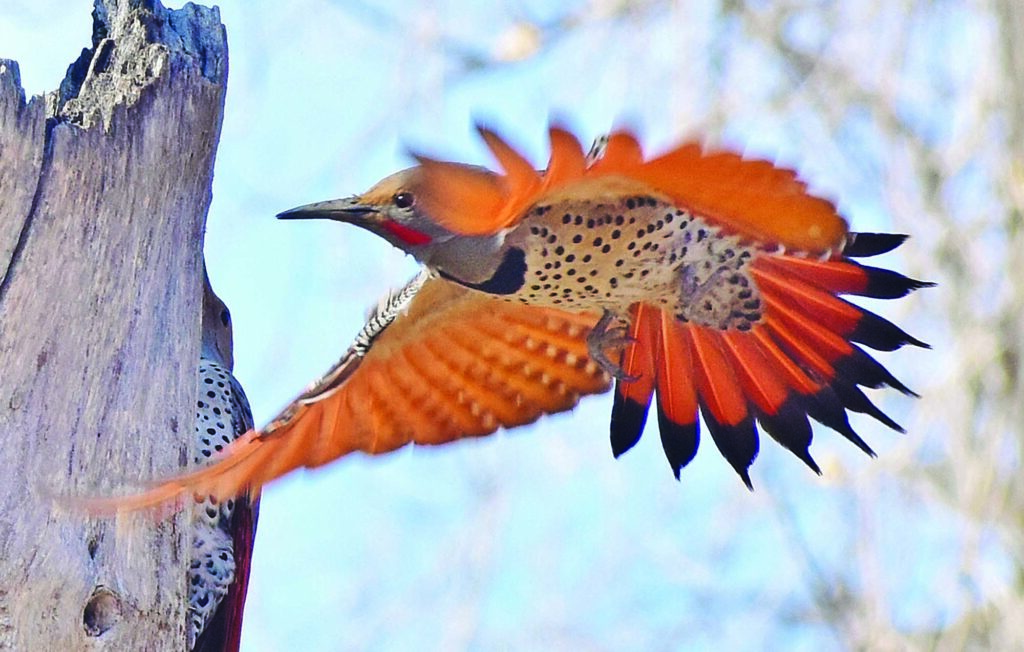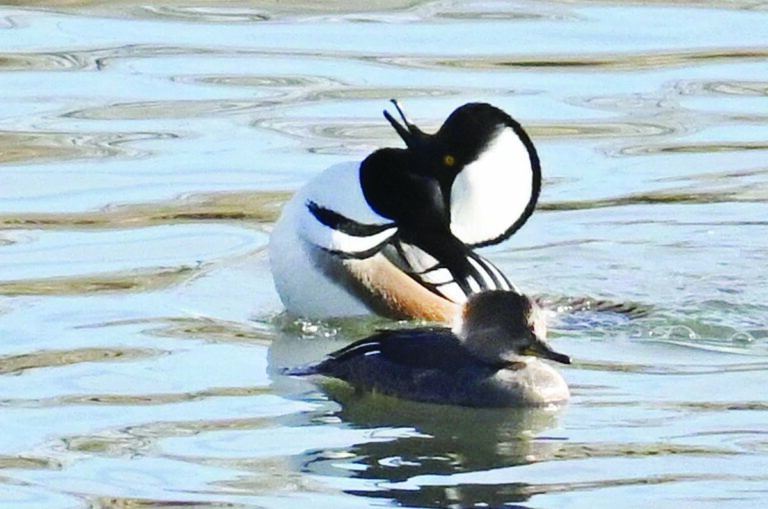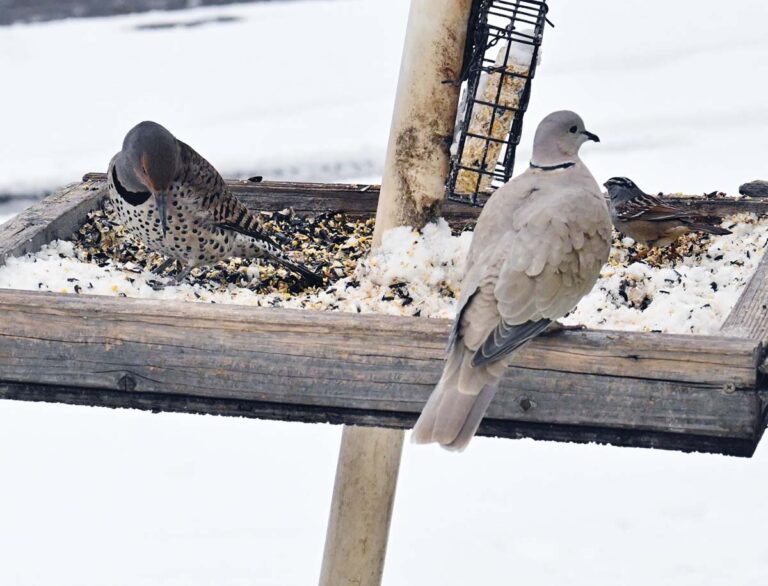Hi all. Happy September. Ken Hall, aka Bird Nut, here again.
After talking bees, spiders, and dragonflies, I’ve decided to return to my bird nut roots. Rather than talk of fleeting migratory, here today gone tomorrow birds, I’ve singled out a most common , frequently seen feathered friend. The Northern Flicker. Other than the fact we see them often, there really is nothing common about them.
Ugh … many will say. These birds are not highly loved by some. Gaining the label of nuisance birds. Not by me. They are beautiful fascinating birds, just doing what they are designed to do.
Since nearly everyone that has ever looked into the trees has seen a Northern Flicker, I won’t belabor a description. Other than the fact that stripes , polka dots, and orange do go together. I feel vindicated for my mid 70’s fashion statement.
Northern Flickers, unlike other woodpeckers, are ground foragers. Using their extra long tongue to probe anthills. Or dig destructive garden insects from the ground. Their rather bland exterior of stripes and dots helps camouflage them from predators such as Cooper Hawks. But when alarmed, or just moving on, they open up to see under their wings a tail of bright orange, red and sometimes yellow. This is always a wow moment for me. And the time my camera shutter is furiously clicking away. Nature has painted them perfectly.
They are seasonally monogamous. Meaning once a mate is found, they are truly dedicated to one another and their young for the season. Both will sit in the nest, and feed the youngsters.
They begin their search for mates and territory in late February, to early June. The males will display fanned tails , flared wings, displaying their amazing colors. They will have non contact jousting with other competitive males. All the while hoping to catch the eye of a lovely lady. Now comes the part where many people lose affection for these birds. They will announce their availability to a lovely lady. Or establish territory by drumming. Pounding on whatever objects will resonate the loudest. Like the gutters, vent pipes, and roof air conditioners of houses. In my case it’s the satellite dish. And as the saying goes, the early bird gets the girl.. Or something like that. Anyway , often starting at five in the morning. Many folks don’t like being awakened at that time of day. Once a mate has been found , the metal drumming will cease. Then they move on to creating a nesting site. Both male and female will poke out a cavity hole in preferably a dead standing tree , with a soft core. At times finding wood siding and fascia to their liking.
Back to the drumming. Much study has been done to figure out why Flickers do not suffer injury by pounding on objects; up to 1200 g’s of force. Over 80 g’s in a human can cause brain damage. A Flicker has the longest tongue of any woodpecker. One third the length of its body. The tongue when withdrawn actually wraps around the back of the skull , and over the top. It acts as a seat belt for the brain as well. Also they have extra plates of a spongy bone in front of , and at the back of the skull. Again acting as a shock absorber. They are actually studied in attempts for better sport helmets to prevent contact brain injury.
So take a few moments to watch a Flicker. Admire a Flicker. And understand they are fascinating and beautiful birds. See you on the trail.






